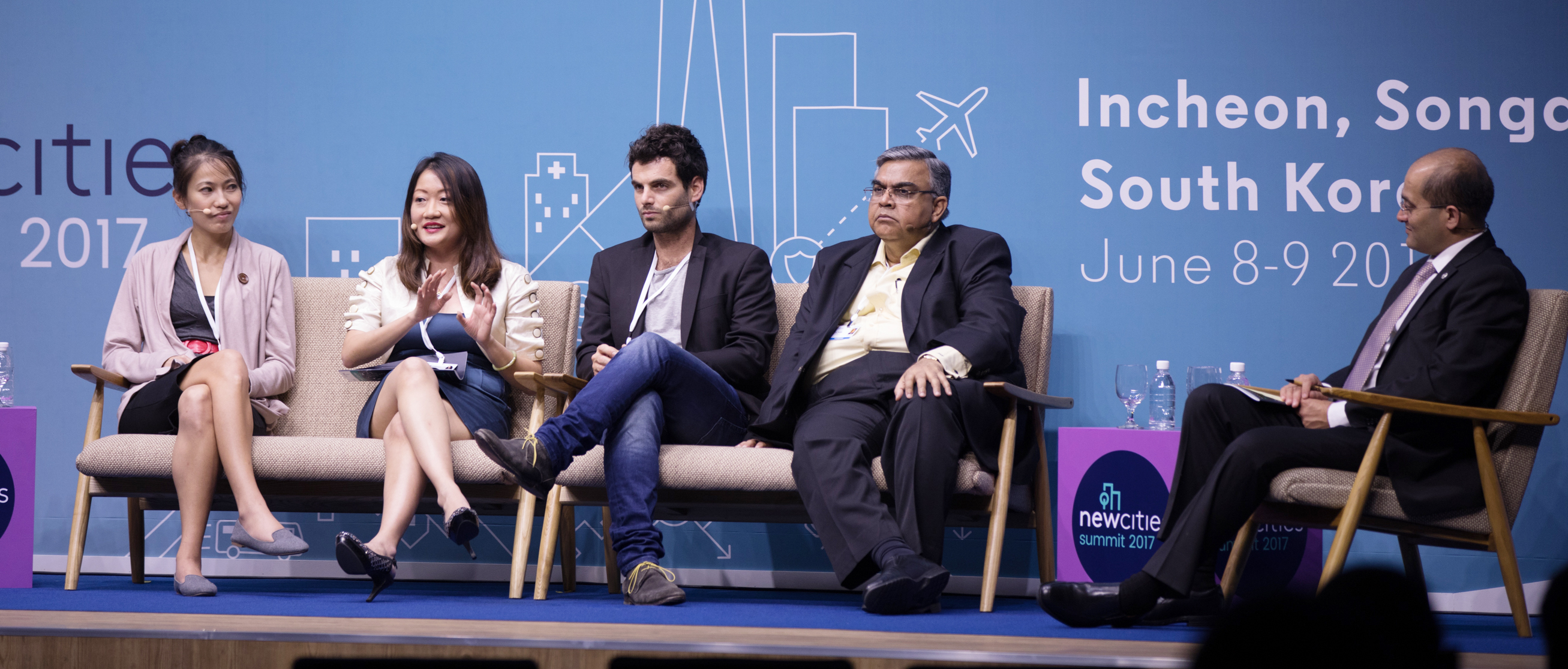
How to Thrive Amidst the Urban Boom
July 19, 2017 — Blog
This post is part of our Thriving Cities discussion series, following the sixth edition of the NewCities Summit in Incheon Songdo, South Korea in June 2017.
Over the next 15 years, the number of urbanites in global cities is expected to rise by 1.5 billion people. There is a pressing need to increase the efficiency of urbanization while reducing the associated costs. What innovations have proven successful in doing so? What are the best practices in city growth management?
“What makes cities come alive is the people that inhabit them,” said Bernise Ang, Co-founder and Executive Director of Zeroth Labs.
A thriving city is also one in which citizen-focused services are driven by innovation and technology. Ajay Pandey, Managing Director and Group CEO of Gujarat International Finance Tech-City (GIFT City) spoke about such innovations in city services where he resides today: “GIFT City features India’s first district cooling system deployed at city-level and an automatic waste collection system.”
GIFT City is experimenting with new ways to attract citizens to a city and, in particular, a greenfield city. With the latest technological innovations, panelists addressed the threat of mechanizing jobs, products and services in a city. Yaron Schwarcz is Founder and CEO of Tridom, an Israeli company seeking to incorporate robotics into cities. He acknowledges that there will be fewer human jobs in the future, but suggests this is not necessarily negative. Instead, this future of technological services will catalyze the shift from a model that looks at humans as productive creatures to creative creatures. “Urban innovation is made possible only by urban innovators,” he said.
When prompted about competition between cities, panelists agreed cities are competing most fiercely for human talent. This will trigger a cyclical process where urban innovation attracts urban innovators and urban innovators drive urban innovation.
The Chief Investment Officer of Amata Corporation, Lena Ng, said: “We need talent and competences at different levels. When we are developing a smart city, we are going into the unknown and the untested. This is why we require qualified professionals – talented workers will drive innovation. They are the people that will create sustainability in the whole value chain.”
The challenge for new cities is establishing this process and helping it gain momentum. The challenge for existing cities is how and where to jump into this cycle. The panel called upon both new and existing cities to look to their citizens first when faced with this great challenge.